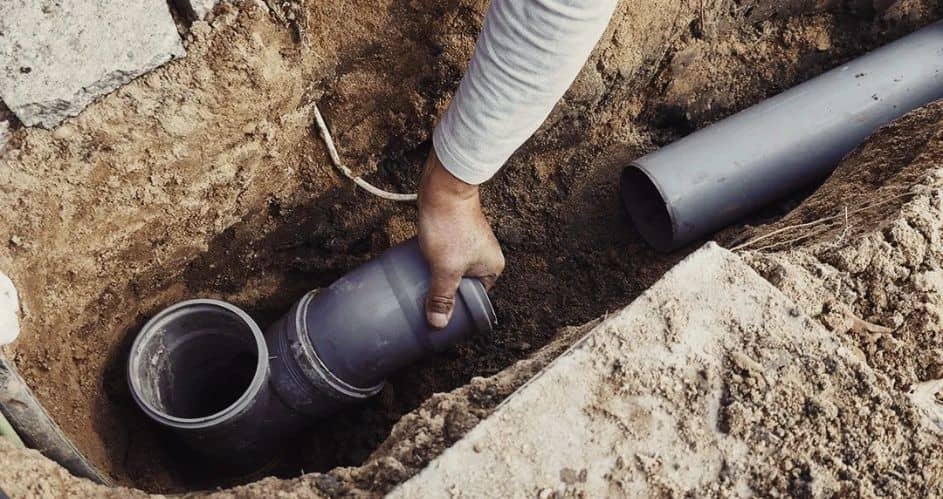
Sewer lines, while often out of sight and out of mind, play an essential role in the sanitation and functionality of any residential or commercial property.
These underground pipes carry wastewater from people’s homes to treatment facilities, ensuring everyone lives in a clean environment. While these pipes serve an invaluable purpose, they’re not immune to problems
This article delves into the common types of sewer line problems and offers insights into their causes and potential solutions.
Most Common Types of Sewer Problems
Tree Root Invasion
A prevalent problem, especially in older homes surrounded by large trees, is tree root invasion. Trees constantly search for water sources, and a sewer line provides an ample supply.
As tiny roots infiltrate the joints and cracks of the pipe, they can expand, causing blockages and even pipe breakage. This can lead to wastewater backing up or inefficient drainage.
A sign of tree root invasion can be slow-draining sinks or toilets. If tree roots are the culprits, regular maintenance and sometimes pipe replacement might be necessary.
Given the intricate nature of addressing this issue, homeowners often worry about the associated costs. To understand the potential burden, you may seek to understand the cost to repair sewer line damages caused by tree root invasion.
Generally, various factors determine the cost, including the extent of the damage, the sewer line’s location, and local labor rates.
Pipe Corrosion And Deterioration
Over time, the materials used to construct sewer lines can corrode or deteriorate. For instance, cast iron pipes, commonly used in older homes, are especially susceptible to rust and corrosion. This can lead to leaks, collapses, and blockages.
To address pipe corrosion and deterioration, it’s important to conduct regular inspections to catch these issues early on. By doing so, homeowners can mitigate significant repair expenses and avoid extensive damage.
Ground Shifts And Settlement
Natural soil movement, ground settling, or even minor earthquakes can exert pressure on sewer lines, causing them to shift, break, or misalign. This displacement can lead to wastewater leaks and compromise the pipeline’s structural integrity.
Depending on the extent of the damage, solutions might range from pipe realignment to complete replacement. In such situations, the expertise of sewer line professionals becomes invaluable.
Bellied Or Sunken Pipe Sections
A ‘bellied’ pipe refers to a section of the sewer line that has sunk due to ground or soil conditions, causing a low spot that can collect waste and paper, leading to blockages.
Addressing this promptly by repairing or replacing the affected section can prevent escalating the issue into a costly repair or replacement.
Blockages And Build-Up
Just as the internal plumbing of a home can get blocked, so can the main sewer line. Grease, hair, paper products, and other foreign objects can lead to partial or complete blockages. Over time, these obstructions can lead to backups or slow drainage.
To mitigate these issues, homeowners are advised to undertake regular maintenance and professional cleaning, ensuring the sewer line remains unobstructed and functional.
Faulty Or Leaking Joints
The places where sections of the sewer line connect, known as joints, can sometimes fail. A broken seal can allow water to escape into the surrounding area, leading to soil erosion or wet spots in the yard.
For instance, a persistently wet spot might be noticed in a garden even without any rain. An inspection pinpointed a leaking joint in the sewer line, allowing wastewater to seep out.
By detecting and repairing faulty joints early, homeowners can prevent more extensive damage to both the sewer system and the surrounding property for homeowners.
Rats And Other Rodents
It might sound like a nightmare scenario, but rats and other rodents can also cause damage to sewer lines. These pests can burrow and chew through pipes, leading to leaks and other issues.
Therefore, homeowners should ensure that the sewer line is free of cracks and holes, which is essential in preventing rodents from causing damage.
Old Age
Simply put, nothing lasts forever, including sewer lines. Over time, the continuous flow of wastewater, coupled with external factors, can wear down a sewer line, leading to various problems. For example, extensive sewer line replacements were carried out in a historic district in Boston.
Most of the pipelines, being over a century old, had naturally reached the end of their lifespan and were causing recurrent issues for the residents.
In this case, conducting regular inspections can help determine the lifespan of a sewer line and anticipate when replacement might be necessary.
Key Takeaways
Maintaining a sewer line’s health is crucial for any property’s well-being. While various issues can arise, being informed about common problems can help in early detection and timely intervention.
Regular inspections, awareness of the signs of potential issues, and prompt action when problems are detected can save homeowners significant amounts of time, hassle, and money in the long run.